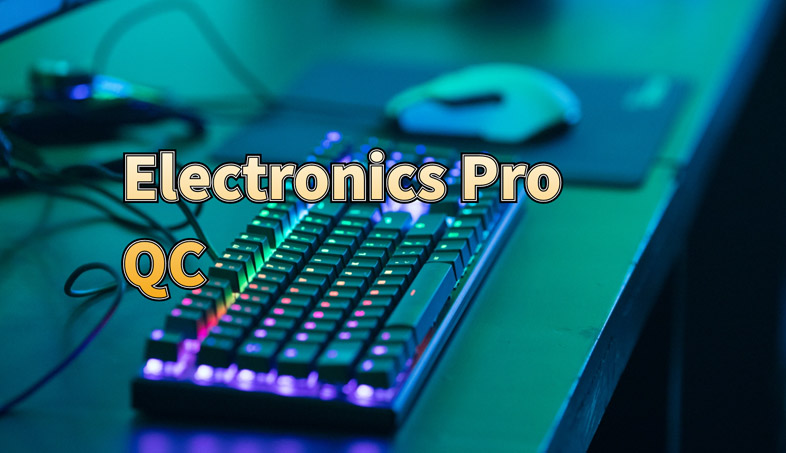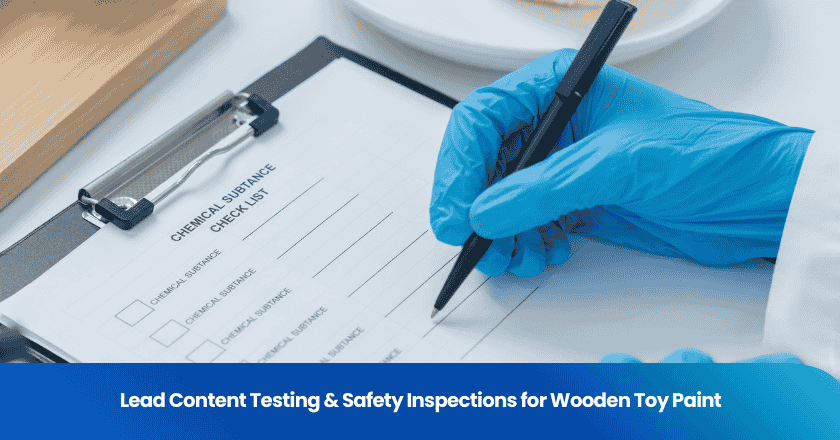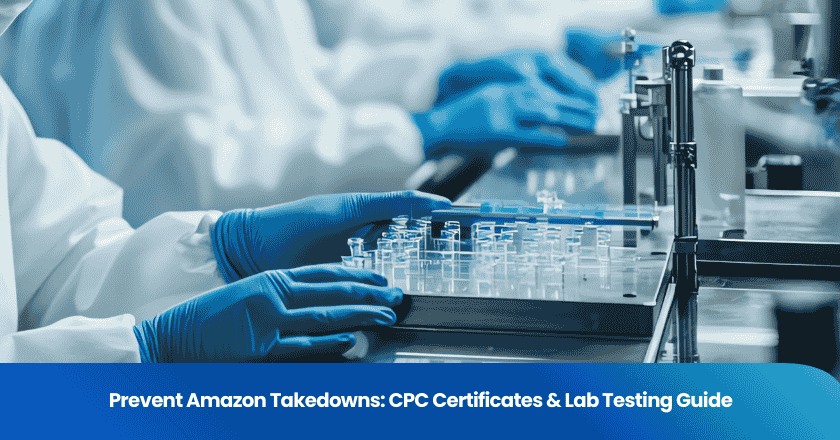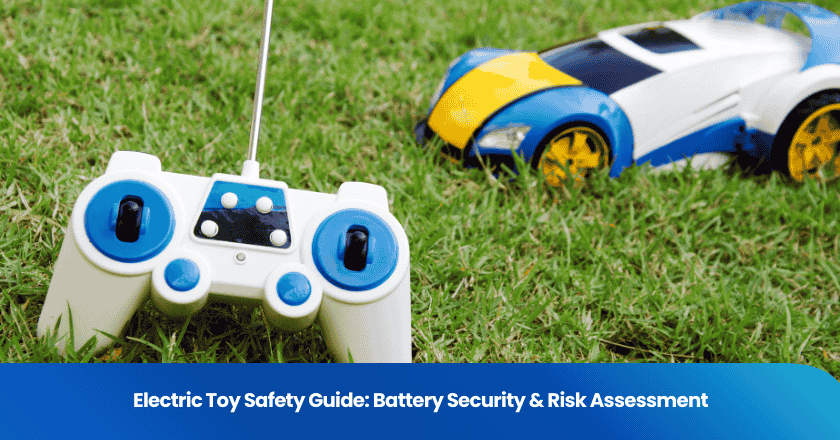
Quality control (QC) is the cornerstone of successful electronic product manufacturing, ensuring that products meet safety, reliability, and performance standards. Effective quality control practices can minimize defects, reduce the risk of recalls, and enhance customer trust.
The electronics industry relies on globally recognized standards and best practices to maintain consistency and compliance. These frameworks provide guidance for manufacturers to produce high-quality, safe, and durable products.
1. Key quality standards for electronic product manufacturing
In the field of electronic product manufacturing, quality serves as a crucial yardstick for evaluating product excellence. Adhering to a series of stringent standards is pivotal to ensuring product quality. Below is a detailed elaboration on several core quality standards in electronic product manufacturing, which you may briefly understand.
International standards for electronic products (ISO, IEC, UL, CE)
International standards establish a unified quality benchmark for electronic products worldwide in their manufacturing process. Notably, the ISO 9001 standard stands out, focusing on the establishment and implementation of a quality management system to ensure consistent quality across all stages of product design, production, and sales.
IEC (International Electrotechnical Commission) standards serve as the norm for the safety and performance of electrical and electronic equipment. These standards encompass the entire process, from product design to final disposal, ensuring that electronic products can operate safely and reliably under both normal use and potential abnormal conditions.
UL (Underwriters Laboratories) verifies the safety and compliance of electrical products through rigorous testing and certification procedures. The UL Mark has become a globally recognized symbol of safety for consumers, providing strong assurance for the smooth circulation of electronic products in the market.
CE certification is a mandatory requirement for electronic products in the EU market, ensuring that products comply with the strict regulations of the EU in terms of safety, health, and the environment. Products that have obtained CE certification signify that they have met the entry requirements for the EU market and can circulate freely across EU countries.
Regional regulations and compliance requirements (e.g., RoHS, REACH)
In addition to international standards, various countries and regions have also formulated corresponding regulations and compliance requirements based on their own situations.
Taking RoHS (Restriction of Hazardous Substances Directive) as an example, it restricts the use of hazardous substances such as lead, mercury, and cadmium in electronic products, protecting human health and the environment. The implementation of the directive has promoted the development of the electronic product manufacturing industry towards a green and environmentally friendly direction.
REACH (Registration, Evaluation, Authoriz
ation and Restriction of Chemicals) is a regulation of the European Union concerning chemical management. It requires all chemicals produced or imported within the EU to be registered, evaluated, and, if necessary, authorized or restricted. The implementation of this regulation effectively controls the use of chemicals in EU manufacturing and reduces the risks posed by chemicals to human health and the environment.
Industry-specific standards (e.g., IPC, J-STD)
As a highly specialized industry, the electronics manufacturing industry also has its unique industry standards.
The IPC (Electronic Interconnection and Packaging Association) standards are among the best, focusing on the design, assembly, and testing of printed circuit boards (PCBs), providing comprehensive and detailed guidance for the PCB manufacturing industry.
J-STD-001 is a soldering standard in the field of electronic assembly, defining requirements for soldering materials, soldering methods, soldering quality, and other aspects during the electronic assembly process, to ensure the soldering quality and reliability of electronic products.
Safety standards for electronic products (e.g., electrical safety, EMC)
Safety is an eternal theme in the manufacturing of electronic products. Electrical safety standards ensure safe operation of equipment under both normal and fault conditions, preventing safety accidents such as fires and electric shocks caused by electrical faults. These standards impose clear requirements on the design, manufacturing, use, and maintenance of electronic products.
Electromagnetic compatibility (EMC) standards aim to reduce electromagnetic interference generated by electronic devices during operation and enhance the devices' resistance to external electromagnetic interference. Adhering to EMC standards ensures that electronic products can operate normally in complex electromagnetic environments, without causing interference to other devices or failing due to external interference.
2. Best practices for electronic product quality control
In the electronics manufacturing industry, quality control is a crucial aspect in ensuring product performance, reliability, and customer satisfaction. Below is a detailed elaboration on best practices for electronic product quality control, serving as a reference for everyone.
Quality control in the design phase: starting from the source
The design stage serves as the starting point of the lifecycle of electronic products.
At this stage, a series of quality control measures should be integrated to ensure that the product design not only meets market demands but also possesses manufacturability and compliance.
Specifically, the design team should pay close attention to the manufacturability of the product and reduce complexity and costs in the production process through optimized design.
Compliance is also an indispensable aspect of the design phase. It is imperative to ensure that product design adheres to relevant international standards and regulatory requirements, such as ISO, IEC, UL, etc., laying a solid foundation for subsequent production and sales.
Quality control and monitoring during the production process
The production stage is a crucial aspect of quality control for electronic products.
During the production process, a regular inspection and monitoring mechanism should be implemented to promptly identify and rectify defects, ensuring product consistency and stability.
Including but not limited to the incoming inspection of raw materials and components, real-time monitoring of the production line, and sampling inspection of finished products.
Through these measures, quality issues in the production process can be effectively prevented, thereby enhancing product qualification rates and customer satisfaction.
Pre-shipment inspection and final testing
Pre-shipment inspection and final testing serve as the last line of defense for quality control of electronic products.
At this stage, a comprehensive evaluation of the product should be conducted to ensure that it meets specifications and standards, as well as customer needs. Pre-shipment inspections should cover multiple aspects such as appearance, functionality, and performance to ensure that the product is flawless.
The final testing is also an essential step, which verifies the reliability and durability of the product by simulating actual usage scenarios.
Only products that have undergone rigorous inspection and testing can be confidently delivered to customers.
Traceability and documentation of quality control processes
In the process of electronic product quality control, attention should be paid to traceability and documentation.
Maintain detailed records of materials, components, and processes to ensure that every step of operation is well-documented. This not only enhances accountability by clarifying the responsible parties and their duties in each stage, but also simplifies the review process, facilitating subsequent traceability and improvement of quality issues.
Detailed documentation can also provide strong support for product maintenance, upgrades, and recalls, safeguarding customers' rights and interests as well as the reputation of the enterprise.
3. Common challenges in electronic product quality control
In the quality control process of electronic products, manufacturers face numerous challenges that affect product performance and reliability, potentially disrupt production plans, increase costs, and even damage the reputation of the enterprise. The following is an explanation of common challenges in electronic product quality control, and you can pay attention to relevant insights.
Variability of components
As the core components of electronic products, the quality and supply stability of components are crucial to product quality and production planning.
However, the variability and supply issues of components pose a significant challenge in quality control.
The quality of components may fluctuate due to differences in production processes, raw materials, or suppliers. This variability may lead to instability in product performance and even cause malfunctions.
Managing complex supply chains and global procurement
With the deepening development of globalization, the supply chain of electronic products has become increasingly complex. Manufacturers need to procure components and materials from multiple suppliers, which may be located in different geographical regions, possessing diverse cultural backgrounds and quality standards.
How to ensure quality consistency in such a complex supply chain environment is another major challenge in quality control.
Manufacturers need to establish effective communication mechanisms, maintain close cooperation with suppliers, jointly develop quality standards and quality control processes, and ensure quality control from the source. At the same time, regular assessments and audits of suppliers are also necessary to ensure their continued compliance with quality requirements.
Ensure consistency in multiple production runs
Maintaining consistency between batches in the production process of electronic products is a challenging task.
Various factors in the production process, such as equipment status, operator skill level, and raw material quality, can all lead to differences between batches. These differences may affect product performance and reliability, thereby reducing user satisfaction.
Manufacturers need to implement strict process control, including standardization of the production process, training and management of operators, quality control of raw materials, etc., to reduce batch-to-batch variability and ensure product consistency.
Mitigate risks in high-mix, low-volume production
With the diversification of market demands, high-mix, low-volume production models are becoming increasingly prevalent in the electronics manufacturing industry. This production model requires manufacturers to be able to switch between producing different product models within a short period of time, while maintaining high quality standards.
The high-mix, low-volume production model also poses risks to quality control. Due to the wide variety of products and small production batches, manufacturers may find it difficult to conduct sufficient testing and verification for each product.
Flexible quality control practices are required, such as the adoption of advanced testing equipment and technology, and the establishment of a rapid response mechanism for handling quality issues, in order to adapt to the diverse range of products and mitigate the risks associated with quality control.
END
Adhering to established standards and best practices can ensure that electronic products meet the expectations of customers and comply with regulations.
Implementing a robust quality control system can enhance product reliability, reduce the risk of recalls, and boost brand reputation in the highly competitive electronics market.
Grow your business with TradeAider Service
Click the button below to directly enter the TradeAider Service System. The simple steps from booking and payment to receiving reports are easy to operate.



